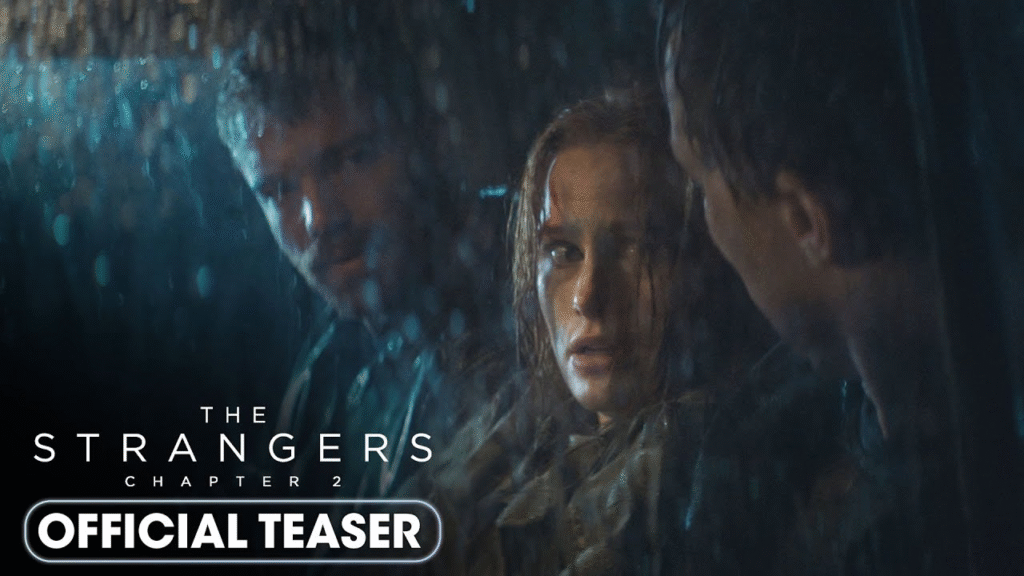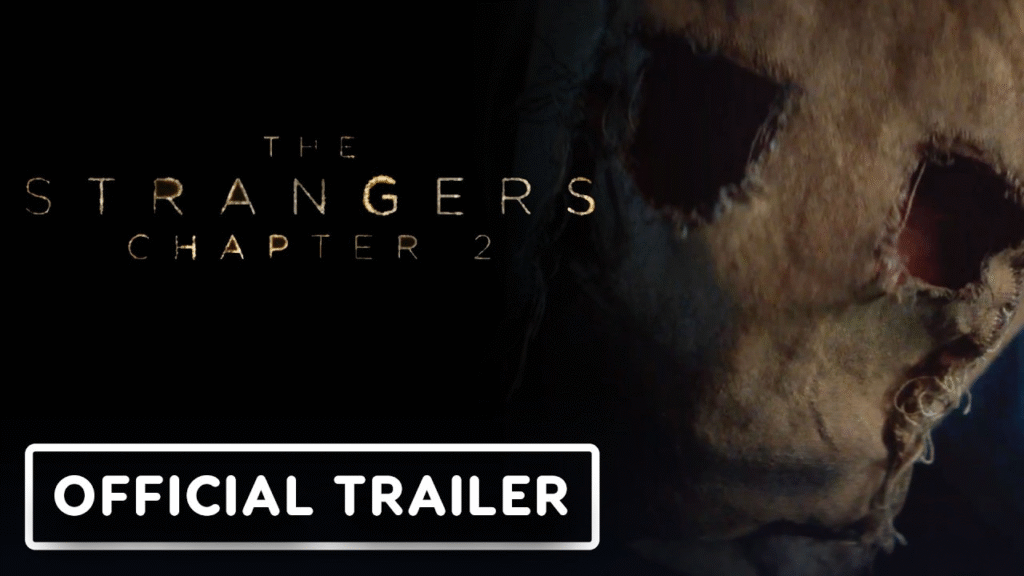Horror thrives not only on the monsters that lurk in the shadows, but on the realization that sometimes, evil doesn’t need a reason. The Strangers: Chapter 2 embraces this terrifying truth with merciless precision. Picking up the blood-soaked trail of its predecessor, the film delivers a brutal reminder: the scariest killers are not supernatural, but ordinary people who choose to hunt.

The story returns to Maya, a survivor still haunted by the violence of the first chapter. Scarred both physically and emotionally, she represents the embodiment of trauma—an unwilling heroine thrust back into the chaos she barely escaped. Her struggle is not just against the masked intruders, but against her own fractured memories, as every creak in the dark threatens to unravel her fragile sense of survival.
Set in Venus, Oregon, the sequel grounds itself in a chillingly ordinary environment. Small-town streets, quiet motels, and isolated homes become the backdrop for unspeakable violence. There is no gothic mansion, no cursed doll—only the stark reality that terror can come knocking at any door. This realism makes the film’s brutality resonate more deeply, because it mirrors the vulnerability of everyday life.

The film amplifies dread through its unsettling marketing campaign, notably the “Visit Venus, Oregon” website. Long before the lights dim in the theater, the horror begins online, drawing audiences into a world where fiction and reality blur. This interactive element heightens the unease, suggesting that the strangers’ reach is not confined to the screen. It’s an ingenious move, proving that the franchise understands fear is most effective when it invades the familiar spaces we trust.
What sets this sequel apart is its pacing. Rather than relying solely on sudden shocks, director Renny Harlin crafts an atmosphere that simmers with anticipation. Silence is weaponized, tension lingers in every frame, and the masked killers rarely rush. Their cruelty lies in patience—the way they watch, stalk, and savor their power over helpless victims.
Maya’s arc evolves beyond mere survival. She is no longer the random target of senseless violence; she becomes a hunted figure determined to resist. Her desperation transforms into defiance, though the film refuses to romanticize her plight. Every victory feels temporary, every flicker of hope smothered by the faceless menace closing in. The narrative never lets us forget: these strangers don’t stop because they can’t be reasoned with.

The masks themselves are icons of terror—expressionless, hollow, and indifferent. They strip away humanity, leaving behind only the suggestion of anonymity. It is this absence of motive that makes the killers more terrifying than any monster. A ghost haunts for a reason, a demon possesses with purpose. But the strangers kill simply because they can, and that lack of logic leaves no path to safety.
Visually, the film leans into stark contrasts. The warm glow of a farmhouse lamp, the flicker of neon on a rain-soaked street, the empty expanse of Oregon woods—all become stages for brutality. Cinematographer José David Montero crafts frames that linger in memory, each one a haunting photograph of dread, where violence is always just outside the corner of vision.
As chaos unfolds, the film refuses to offer resolution. There are no final exorcisms, no sealed curses, no promises that the strangers will ever be stopped. Instead, the story reminds us that evil persists precisely because it is ordinary. These killers are not supernatural—they are chillingly human. And in that truth lies the most horrifying revelation: anyone could wear the mask.
By the time credits roll, The Strangers: Chapter 2 leaves its audience not with relief, but with unease. The experience lingers like a bruise, tender and unforgettable. It doesn’t just terrify—it unsettles, forcing viewers to question the fragility of their own safety. Every locked door, every flickering streetlight, every empty parking lot becomes a stage for potential violence.
In the end, the film is not about survival as much as it is about exposure—exposure to the randomness of cruelty, to the faceless nature of violence, to the chilling reminder that there is no why. With its visceral intensity and relentless dread, The Strangers: Chapter 2 secures its place as one of the year’s most merciless cinematic experiences, proving once more that the mask is scarier than the monster beneath.




